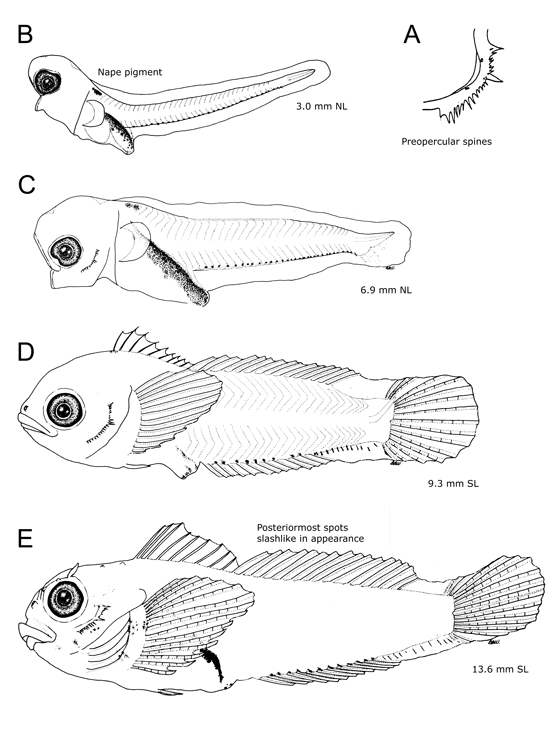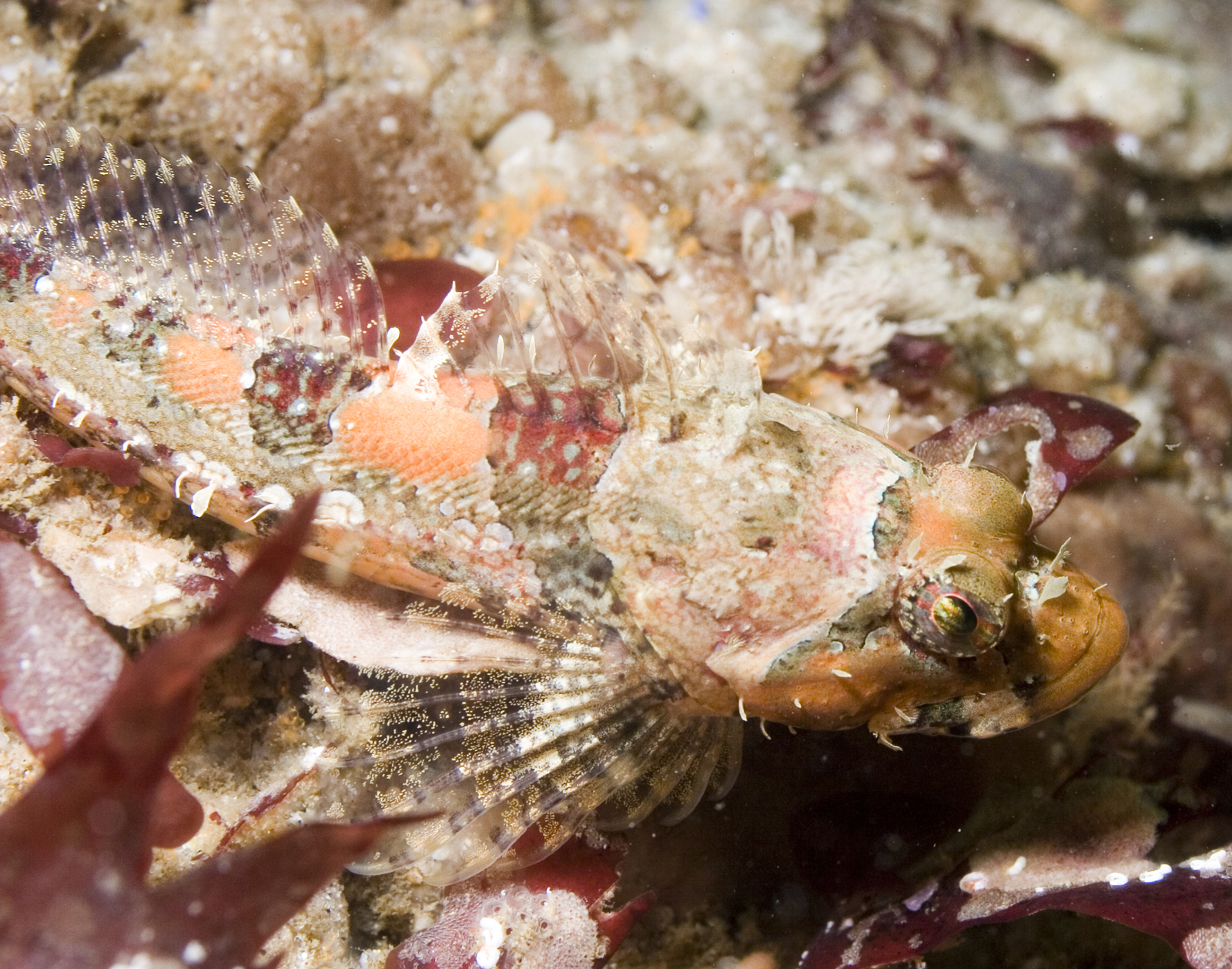|
Artedius
''Artedius'' is a genus of marine ray-finned fishes belonging to the family Cottidae, the typical sculpins. These fishes are found in the northern Pacific Ocean. Taxonomy ''Artedius'' was first proposed as a genus in 1854 by the French zoologist Charles Frédéric Girard with ''Scorpaenichthys lateralis'', described by Girard from California in 1854, designated as its type species by Jordan and Evermann in 1896. The 5th edition of Fishes of the World classifies this genus in the subfamily Cottinae of the family Cottidae but other authorities classify it in the subfamily Oligocottinae of the family Psychrolutidae. Etymology ''Artedius'' suffixes it’s, meaning “belonging to” onto Artedi, Girard did not explain who this was honouring but it is almost certain that it is Peter Artedi, the “father of ichthyology”. Species There are currently five recognized species in this genus: * ''Artedius corallinus'' ( C. L. Hubbs, 1926) (coralline sculpin) * ''Artedius fenestralis'' ... [...More Info...] [...Related Items...] OR: [Wikipedia] [Google] [Baidu] |
Artedius Harringtoni
''Artedius harringtoni'', also known as the scalyhead sculpin or plumose sculpin, is a demersal species of marine ray-finned fish belonging to the family Cottidae, the typical sculpins. The species is native to the eastern Pacific. Etymology The genus ''Artedius'' is named after Peter Artedi, a naturalist, and ''A. harringtoni'' is named after Mark W. Harrington, president of the University of Washington from 1895 to 1897. Description ''Artedius harringtoni'' uses camouflage to blend into its surroundings. It can be identified by the orange linings of its gills and the orange or red lines running through its eyes. The species also has cirri above each eye. ''A. harringtoni'' is sexually dimorphic, with adult males reaching a maximum length of 10 centimeters. Range and habitat ''Artedius harringtoni'' is native to the eastern Pacific along the West Coast of the United States and the British Columbia Coast, with a range extending from Kodiak Island, Alaska, to San Miguel ... [...More Info...] [...Related Items...] OR: [Wikipedia] [Google] [Baidu] |
Artedius
''Artedius'' is a genus of marine ray-finned fishes belonging to the family Cottidae, the typical sculpins. These fishes are found in the northern Pacific Ocean. Taxonomy ''Artedius'' was first proposed as a genus in 1854 by the French zoologist Charles Frédéric Girard with ''Scorpaenichthys lateralis'', described by Girard from California in 1854, designated as its type species by Jordan and Evermann in 1896. The 5th edition of Fishes of the World classifies this genus in the subfamily Cottinae of the family Cottidae but other authorities classify it in the subfamily Oligocottinae of the family Psychrolutidae. Etymology ''Artedius'' suffixes it’s, meaning “belonging to” onto Artedi, Girard did not explain who this was honouring but it is almost certain that it is Peter Artedi, the “father of ichthyology”. Species There are currently five recognized species in this genus: * ''Artedius corallinus'' ( C. L. Hubbs, 1926) (coralline sculpin) * ''Artedius fenestralis'' ... [...More Info...] [...Related Items...] OR: [Wikipedia] [Google] [Baidu] |
Artedius Corallinus
''Artedius corallinus'', the coralline sculpin, is a species of marine ray-finned fish belonging to the family Cottidae, the typical sculpins. It is found in the eastern North Pacific along the coasts of the western United States and Baja California. Taxonomy ''Artedius corallinus'' was first formally described as ''Allartedius corallinus'' in 1926 by the American ichthyologist Carl Leavitt Hubbs with its type locality given as California. The specific name ''corallinus'' means “pertaining to coral”, probably referring to this species association with coralline algae and it’s camouflaged color and pattern. Description ''Artedius corallinus'' has a large wide flattened head with a mouth reaching the rear edge of its large eyes. The colour is dark gray to rufous on the upper body and head with a pair of clear white bands on the head with a reddish-brown band between them and an obvious white spot at the base of the caudal peduncle. The non paired fins are transparent with b ... [...More Info...] [...Related Items...] OR: [Wikipedia] [Google] [Baidu] |
Artedius Lateralis
''Artedius lateralis'', also known as the smoothhead sculpin or round-nosed sculpin, is a species of marine ray-finned fish belonging to the family Cottidae, the typical sculpins. The species, commonly found in the intertidal zone and to depths of 43 feet, is native to the northern Pacific, from Russia and the Bering Sea to Baja California. Growing to a length of 14 centimeters, it takes its name from the lack of scales on its head. References External links * Smoothhead Sculpin (''Artedius lateralis'')at the Encyclopedia of Life The ''Encyclopedia of Life'' (''EOL'') is a free, online encyclopedia intended to document all of the 1.9 million living species known to science. It is compiled from existing trusted databases curated by experts and with the assistance of non ... lateralis Fish described in 1854 Fish of the Pacific Ocean Taxa named by Charles Frédéric Girard {{Scorpaeniformes-stub ... [...More Info...] [...Related Items...] OR: [Wikipedia] [Google] [Baidu] |
Artedius Fenestralis
''Artedius fenestralis'', the padded sculpin, is a species of marine ray-finned fish belonging to the family Cottidae, the typical sculpins. The species is native to the eastern Pacific, with a range extending from the Alaska Peninsula to Southern California. It grows to a maximum length of 14 centimeters and subsists on a diet of shrimp Shrimp are crustaceans (a form of shellfish) with elongated bodies and a primarily swimming mode of locomotion – most commonly Caridea and Dendrobranchiata of the decapod order, although some crustaceans outside of this order are refer ... and small fishes. References External links Padded Sculpin (''Artedius fenestralis'')at thEncyclopedia of Life fenestralis Fish described in 1883 Fish of the Pacific Ocean Fish of the Western United States Taxa named by David Starr Jordan Taxa named by Charles Henry Gilbert {{Scorpaeniformes-stub ... [...More Info...] [...Related Items...] OR: [Wikipedia] [Google] [Baidu] |
Artedius Notospilotus
''Artedius notospilotus'', or the bonehead sculpin, is a species of marine ray-finned fish belonging to the family Cottidae, the typical sculpins. Commonly found in the intertidal zone to depths of 170 feet, the species has a range extending from the Puget Sound, Washington to the Baja California peninsula. It serves as the host for ''Podocotyle enophrysi'', a species of parasitic flatworm The flatworms, flat worms, Platyhelminthes, or platyhelminths (from the Greek πλατύ, ''platy'', meaning "flat" and ἕλμινς (root: ἑλμινθ-), ''helminth-'', meaning "worm") are a phylum of relatively simple bilaterian, unsegment .... References External links Bonyhead sculpin (''Artedius notospilotus'')at the Encyclopedia of Life notospilotus Taxa named by Charles Frédéric Girard Fish described in 1856 Fish of the Pacific Ocean Fish of the Western United States Fish of Mexican Pacific coast {{Scorpaeniformes-stub ... [...More Info...] [...Related Items...] OR: [Wikipedia] [Google] [Baidu] |
Cottidae
The Cottidae are a family of fish in the superfamily Cottoidea, the sculpins. It is the largest sculpin family, with about 275 species in 70 genera.Kane, E. A. and T. E. Higham. (2012)Life in the flow lane: differences in pectoral fin morphology suggest transitions in station-holding demand across species of marine sculpin.''Zoology'' (Jena) 115(4), 223-32. They are referred to simply as cottids to avoid confusion with sculpins of other families. Cottids are distributed worldwide, especially in boreal and colder temperate climates. The center of diversity is the northern Pacific Ocean. Species occupy many types of aquatic habitats, including marine and fresh waters, and deep and shallow zones. A large number occur in near-shore marine habitat types, such as kelp forests and shallow reefs. They can be found in estuaries and in bodies of fresh water. Most cottids are small fish, under in length. The species ''Scorpaenichthys marmoratus'' can be up to in length.Froese, R. and D ... [...More Info...] [...Related Items...] OR: [Wikipedia] [Google] [Baidu] |
Cottinae
Cottinae is a subfamily of ray-finned fishes belonging to the family Cottidae, the typical sculpin A sculpin is a type of fish that belongs to the superfamily Cottoidea in the order Scorpaeniformes.Kane, E. A. and T. E. Higham. (2012)Life in the flow lane: differences in pectoral fin morphology suggest transitions in station-holding demand a ...s. The subfamily has species throughout the northern hemisphere in both marine and freshwater habitats. Genera The following genera are included within the subfamily Cottinae: References {{Taxonbar, from=Q116151118 Cottidae Taxa named by Charles Lucien Bonaparte Ray-finned fish subfamilies ... [...More Info...] [...Related Items...] OR: [Wikipedia] [Google] [Baidu] |
Baja California
Baja California (; 'Lower California'), officially the Free and Sovereign State of Baja California ( es, Estado Libre y Soberano de Baja California), is a state in Mexico. It is the northernmost and westernmost of the 32 federal entities of Mexico. Before becoming a state in 1952, the area was known as the North Territory of Baja California (). It has an area of (3.57% of the land mass of Mexico) and comprises the northern half of the Baja California Peninsula, north of the 28th parallel, plus oceanic Guadalupe Island. The mainland portion of the state is bordered on the west by the Pacific Ocean; on the east by Sonora, the U.S. state of Arizona, and the Gulf of California; on the north by the U.S. state of California; and on the south by Baja California Sur. The state has an estimated population of 3,769,020 as of 2020, significantly higher than the sparsely populated Baja California Sur to the south, and similar to San Diego County, California, to its north. Over 75% of ... [...More Info...] [...Related Items...] OR: [Wikipedia] [Google] [Baidu] |
Total Length
Fish measurement is the measuring of individual fish and various parts of their anatomies. These data are used in many areas of ichthyology, including taxonomy and fisheries biology. Overall length * Standard length (SL) is the length of a fish measured from the tip of the snout to the posterior end of the last vertebra or to the posterior end of the midlateral portion of the hypural plate. Simply put, this measurement excludes the length of the caudal (tail) fin. * Total length (TL) is the length of a fish measured from the tip of the snout to the tip of the longer lobe of the caudal fin, usually measured with the lobes compressed along the midline. It is a straight-line measure, not measured over the curve of the body. Standard length measurements are used with Teleostei (most bony fish), while total length measurements are used with Myxini (hagfish), Petromyzontiformes (lampreys), and (usually) Elasmobranchii (sharks and rays), as well as some other fishes. Total length me ... [...More Info...] [...Related Items...] OR: [Wikipedia] [Google] [Baidu] |


